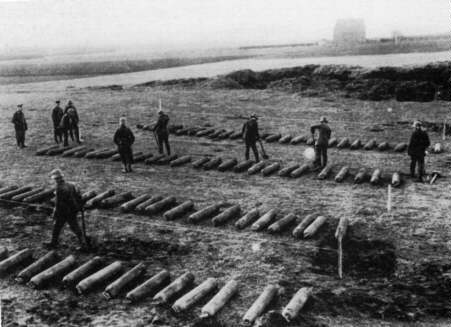About
The Paardenmarkt is one of the many munition dumpsites in our seas and oceans, but its magnitude (estimated 35.000 tons of conventional and chemical WW1 munition) and unique location (less than one mile off the densely populated Belgian coast and close to a major harbour) make it a huge challenge in terms of management. The munition contains chemical warfare agents (CWA) as well as TNT and propellant material, which threaten the health of humans and ecosystems alike. To this day, the site was left undisturbed and monitored with regular intervals. Yet, increased environmental concern and new plans for coastal development in the area have placed the current management approach under considerable pressure. At this moment the scientific knowledge is insufficient for any reliable judgement on the state of the site. Past research has been fragmentary, and a lot of uncertainties still remain today.

This project aims to address the knowledge gaps through innovative in- and ex-situ research, and will use the obtained results to develop an integrated scientific workflow for the risk assessment of munition dumpsites at sea. This should allow a scientifically underpinned management strategy for the Paardenmarkt dumpsite.
A thorough characterization of the present state of the dumpsite is the project start. Novel technologies will be used to determine the burial depth, take sediment samples close to the munition, and assess the freshwater flux at the site. Chemical warfare agents (CWA), explosives and their degradation products will be analysed with new methodologies, advancing detection limits. The physical state of the shells will be evaluated through an innovative combination of experimental analyses and integrated modelling of different corrosion processes. Novel in-situ passive sampling devices will analyse a time-integrated spatial distribution of the water exchangeable fraction of munition-related chemical compounds. This will be related to bioaccumulation and ecotoxicity of these compounds in laboratory bio-assays including passive dosing.
Dynamic modelling of chemical fate and effects on humans and the environment (including mixture toxicity) will result in a chemical risk assessment. Dedicated experiments and models will evaluate the explosion risk of the aged compounds. Collaborating microbial communities will be constructed to break down key hazardous chemicals through smart inoculation. New technologies for monitoring and management will be evaluated together with key players in the field. Finally we will develop a scientific workflow for dumpsite research and provide a policy informing document.
Background information
This project with primarily a social finality is part of the Strategic Basic Research (SBO) programme of the Research Foundation Flanders (FWO).
Start date: 1 January 2020
Project duration: 48 months
The consortium exists of experts from the Flanders Marine Institute (VLIZ), the Royal Belgian Institute of Natural Sciences (RBINS) - Directorate Natural Environment, the Antwerp Maritime Academy (AMA), the University of Ghent - Centre for Microbial Ecology and Technology (UG-CMET), Environmental Toxicology Unit (UG-GhEnToxLab), Applied Geology and Hydrogeology (UG-HYDRO)), University of Antwerp – Systemic Physiological and Ecotoxicological Research Group (UA-SPHERE) and the Royal Military Academy (RMA).
Project coordinator is Tine Missiaen, senior researcher at VLIZ.
 Website developed and maintained by
Website developed and maintained by